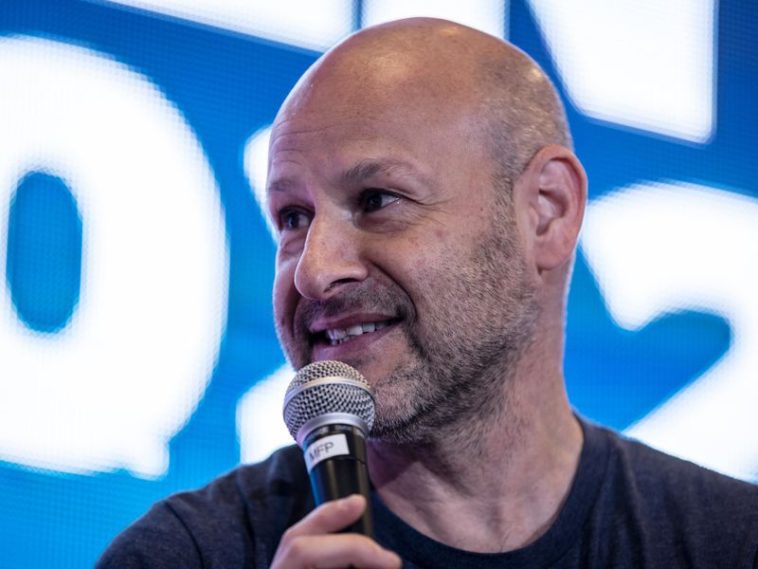Takeaways
-
ConsenSys is set to deploy Linea, its ZK-rollup network, to the main Ethereum network.
-
Linea uses zero-knowledge (ZK) cryptography to offer cheaper and faster blockchain transactions; ConsenSys says fee rates, known as gas prices, will be 15 times less on Linea than Ethereum.
-
ConsenSys says it does not currently have plans for a Linea token.
ConsenSys, the research and development firm behind the popular Metamask crypto wallet, plans to roll out its layer-2 network, Linea, to the main Ethereum network this week.
The so-called rollup network is known as a zkEVM, which means it relies on zero-knowledge (ZK) cryptography – one of this year’s hottest blockchain trends – and is compatible with the Ethereum Virtual Machine (EVM) programming environment, so existing Ethereum-based applications can be ported over without significant additional work. Rollups are seen as a critical element of the Ethereum blockchain’s roadmap, since they offer users cheaper and faster transactions compared with the often-congested parent network.
App developers will be able to deploy their projects to Linea’s “alpha” network on Friday, with the general public gaining access to it starting next week.
With the mainnet alpha launch, Linea joins a string of recent zkEVM projects vying to expand accessibility to Ethereum, the second-biggest blockchain by transaction volume. Rollup networks like Linea are expected to eventually become the primary method by which users access Ethereum, considered impractical for many users and use cases due to its high fees.
“Because the gas prices on the layer 2 are 15 times less than on layer 1, many use cases become possible,” Nicolas Liochon, the global product lead for Linea, told CoinDesk.
ConsenSys is led by Ethereum co-founder Joe Lubin and builds some of the ecosystem’s core infrastructure, including MetaMask as well as Infura.
Emphasizing that ConsenSys remains “dedicated to Ethereum,” Liochon said that “by moving over activities to layer 2, we basically are able to increase, by multiple orders of magnitude, the number of people that will be able to use the network.”
The first Ethereum rollups to market, Optimism and Arbitrum, were so-called “optimistic” rollups – based on a slightly different technology that comes with the drawback of lengthy settlement times.
Newer ZK rollups like Linea work similarly – bundling up large groups of transactions and “settling” them in bulk to Ethereum’s ledger – but their developers are betting ZK cryptography will eventually make them speedier, cheaper, and more secure than optimistic alternatives.
Unlike some of its zkEVM competitors, ConsenSys opted to make its network bytecode-compatible with the EVM – a technical nuance that could theoretically make Linea easier to use with existing Ethereum developer tools.
According to ConsenSys, over 5 million unique wallets have already transacted on Linea’s test network, which went live in March and used NFTs and other hand-outs to incentivize new users.
Many existing layer 2 networks, like Arbitrum and Optimism, have “airdropped” tokens to early users after launching to the main Ethereum network. The tokens could be sold for a quick profit or used as votes to help govern updates to the protocol; dangling the prospect of an airdrop is seen as a way of encouraging users to try out new networks.
There has long been speculation that ConsenSys might eventually launch a token for Linea. While Liochon wouldn’t count out the possibility of a Linea token, he said that if it ever does arrive, it won’t be for a while.
“What do we want to do? Do we want to get rich quickly, or do we want to build something?” asked Liochion. “Yeah, basically, I think that we should build things.”
Ethereum’s rollup landscape
Linea’s launch comes after zkSync and Polygon, the first two zkEVM networks to launch on Ethereum’s mainnet, released software development kits (SDKs) allowing coders to clone their code to spin up their own rollup networks.
ConsenSys says Linea will become fully open-source in the coming weeks, meaning developers will be able to freely use its code (though ConsenSys has no current plans to release an SDK).
Zero-knowledge rollup technology is new and still advancing. As Linea enters its alpha launch, it will still have certain points of centralization in its system – which Liochon refers to as “training wheels” – as a way to protect users from unforeseen bugs and other hiccups.
For now, ConsenSys will still be the only party allowed to submit zero-knowledge proofs to Linea’s smart contracts on Ethereum. In layman’s terms, this means the firm will act as a sort of transaction traffic cop for the time being – directing transactions and packaging them up into the bundles that it sends to Ethereum.
“If you’re fully decentralized, basically the idea is that anyone can submit proofs,” said Liochon. “But you need to be 100% sure that there’s no issue in your proof system. We’re not there yet.”
Edited by Bradley Keoun.
DISCLOSURE
Please note that our
and
do not sell my personal information
has been updated
.
The leader in news and information on cryptocurrency, digital assets and the future of money, CoinDesk is a media outlet that strives for the highest journalistic standards and abides by a
strict set of editorial policies.
CoinDesk is an independent operating subsidiary of
which invests in
and blockchain
As part of their compensation, certain CoinDesk employees, including editorial employees, may receive exposure to DCG equity in the form of
which vest over a multi-year period. CoinDesk journalists are not allowed to purchase stock outright in DCG
.
Sam is CoinDesk’s deputy managing editor for tech and protocols. He reports on decentralized technology, infrastructure and governance. He owns ETH and BTC.
Learn more about Consensus 2024, CoinDesk’s longest-running and most influential event that brings together all sides of crypto, blockchain and Web3. Head to consensus.coindesk.com to register and buy your pass now.
https://www.coindesk.com/tech/2023/07/11/metamask-developer-consensys-brings-layer-2-blockchain-linea-to-ethereum-mainnet/?utm_medium=referral&utm_source=rss&utm_campaign=headlines



:format(jpg)/www.coindesk.com/resizer/Qc1SOsxolC6_Esqs89-xeXCpbKk=/arc-photo-coindesk/arc2-prod/public/VDZCFPNTYVCTNBFQBVIGFLKBAA.png)


